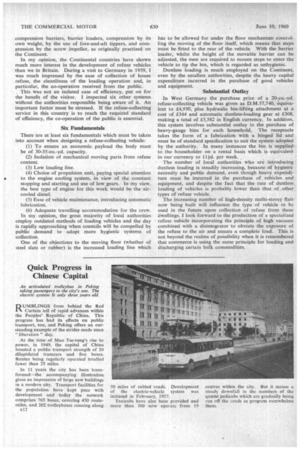Quick Progress in Chinese Capital
Page 80

If you've noticed an error in this article please click here to report it so we can fix it.
An articulated trolleybus in Peking taking passengers to the city's zoo. The electric system is only three years old.
110 UMBLINGS from behind the Red 1% Curtain tell of rapid advances within the Peoples' Republic of China. This progress has had its effects on public transport, too, and Peking offers an outstanding example of the strides made since " liberation " day.
At the time of Mao Tse-tung's rise to power, in 1949, the capital of China boasted a public transport strength of 20 dilapidated tramcars and five buses. Routes being regularly operated totalled fewer than 25 miles.
In 11 years the city has been transformed—the accompanying illustration gives an impression of large new buildings in a modern city. Transport facilities for the population have kept pace with development and today the network comprises 765 buses, covering 450 routemiles, and 207 trolleybuses running along El 2 50 miles of cabled Toads. Development of the electric-vehicle system was initiated in February, 1957.
Taxicabs have also been provided and more than 300 now operate from 19 centres within the city. But it means a steady downfall in the numbers of the quaint pedicabs which are gradually being run off the roads as progress overwhelms them.




















































































































































